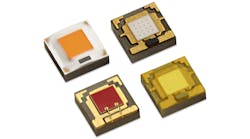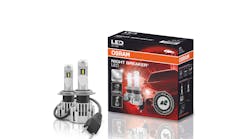PLASA, a trade association serving the entertainment, leisure, communication and architectural industries, is urging members to familiarize themselves with the new regulations well before they come into effect next year.
Passed by the European Parliament in 2005 and due to be implemented into UK law on 11 August 2007, the EuP Directive aims to improve the environmental performance of all products that use any form of energy, throughout their entire life cycle of manufacturing, use and disposal. It will do so by enforcing systematic integration of environmental aspects at the earliest stage of product design.
Like RoHS, the regulations will apply to all relevant (in this case, energy-using) products sold within the EU, wherever they are manufactured, although it is unclear as yet how the regulations will be enforced. For many manufacturers worldwide the new measures will entail potentially substantial product redesign and re-engineering.
The directive can be viewed at http://ec.europa.eu/enterprise/eco_design/directive_2005_32.pdf?lang=_e with more information available athttp://www.netregs.gov.uk/netregs/legislation/380525/1216740/?lang=_e.
The "ecodesign" parameters for an EuP’s life cycle will include raw materials; manufacturing; packaging, transport and distribution; installation and maintenance; use; and final disposal.
For each phase of the cycle, a variety of environmental aspects will be assessed, including consumption of materials, energy and other resources such as fresh water; emissions to air, water or soil; pollution caused by noise, vibration, radiation and electromagnetic fields; generation of waste material; and the potential for reuse, recycling and energy recovery, taking into account the requirements of the Waste Electrical and Electronic Equipment (WEEE) Directive – which is still yet to be enforced in the UK.
Ron Bonner and Nic Bowker of PLASA’s Technical Resources Office – which has issued a Guidance Note on the subject – warn: “As with RoHS, it is up to manufacturers to look at these proposals well ahead and respond quickly. It will be too late in a year’s time.
“There are some exemptions, but, like RoHS, the directive’s wording is very ambiguous in places. For example, it appears only to apply to products of which 200,000 or more are sold on the EU market per year. People might think that will exempt them if they manufacture, say, 10,000 units of a moving light per year – but what the directive actually means is that if the total number of all sales of moving lights by all manufacturers exceeds 200,000, then all the units will fall under the scope of the EuP Directive’s requirement.”
PLASA’s Guidance Notes states: “At the time of writing the UK had not produced any draft Regulations, Guidance or Regulatory Impact Assessment notes, so this guidance is intended to warn of the impending legislation and possible impacts on your products. Just how the UK or any other EU country interprets the requirements for their own legal framework won’t be known until their respective Governments issue the draft regulations for those countries.”
Matthew Griffiths, PLASA’s Managing Director, adds: “Manufacturers should make every effort to read the directive and make comments to PLASA. We are in constant discussion with Government about these issues and any feedback could be of great benefit to the whole industry.”
The Guidance Note can be viewed in full by PLASA members on the Association’s website.




